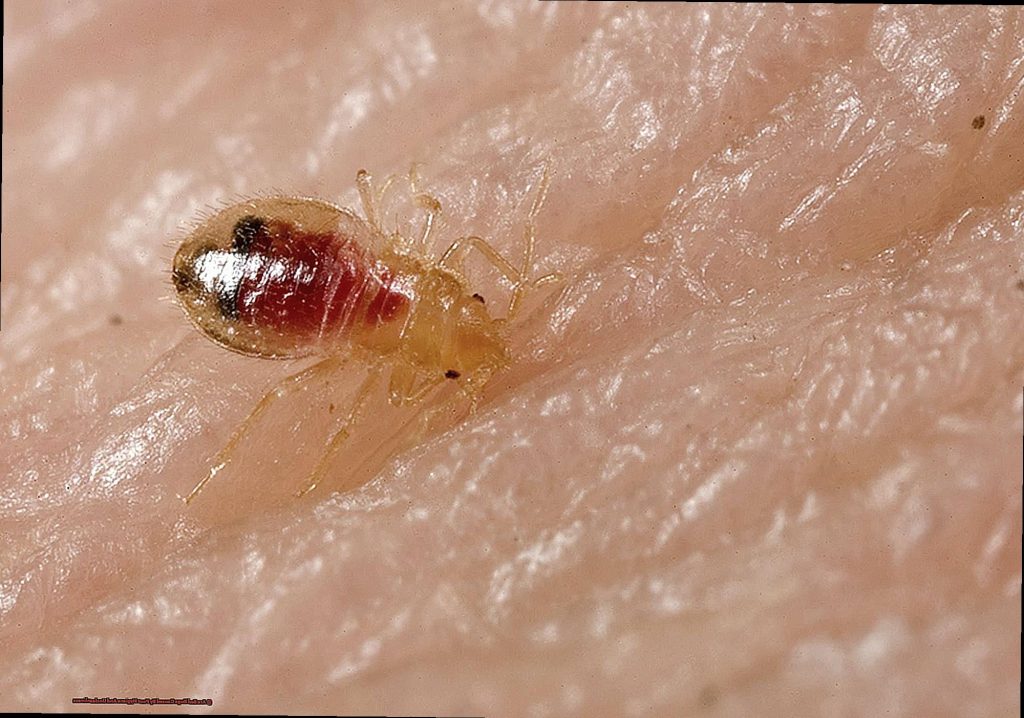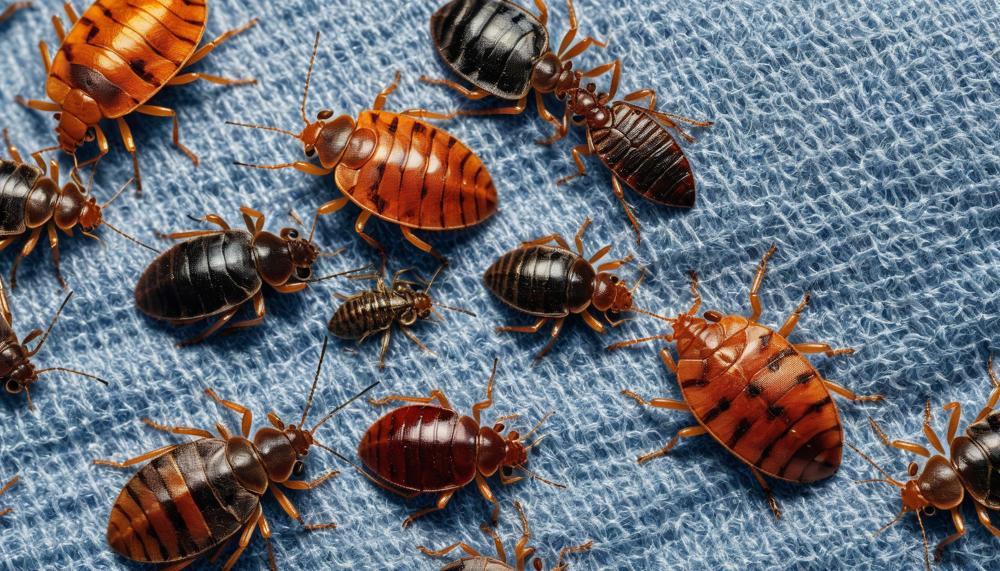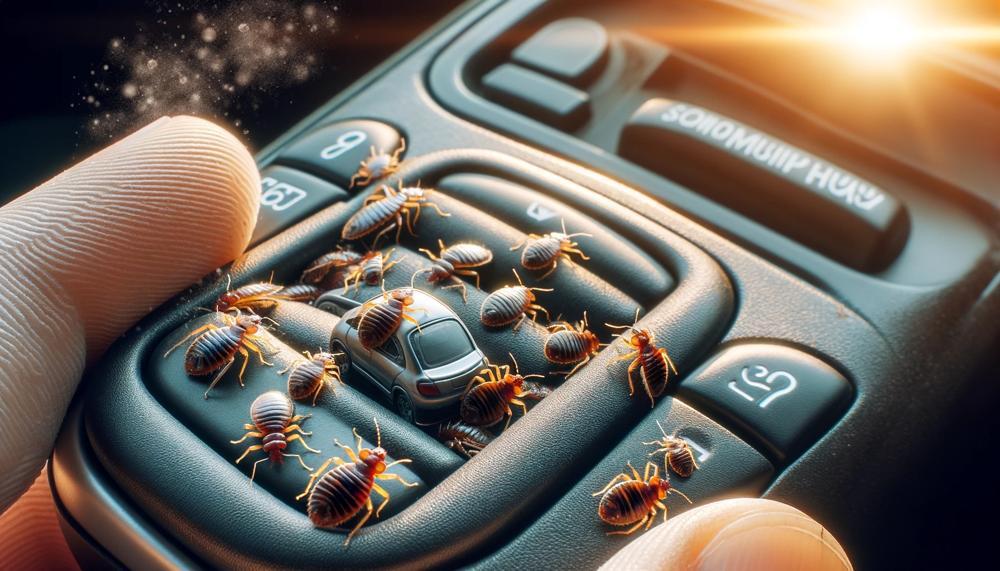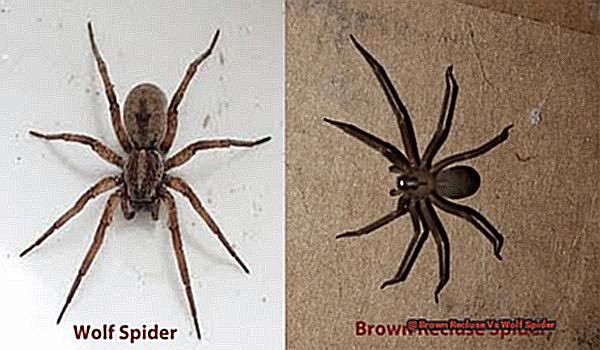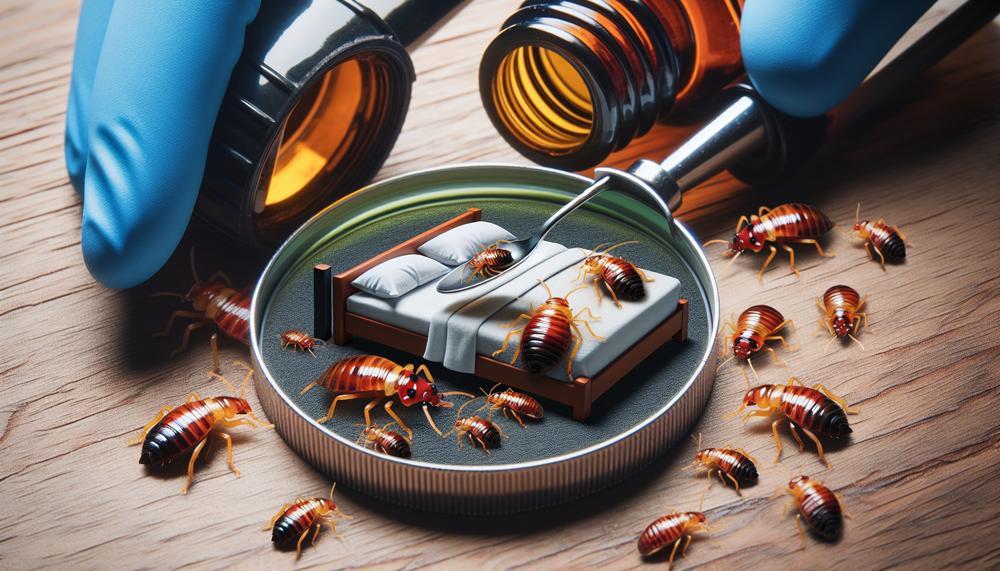Imagine this: you finally settle into bed after a long, exhausting day, ready to drift off into a peaceful slumber. But as soon as you close your eyes, an intense itch takes over your body. You flick on the light and discover tiny, bloodthirsty creatures crawling all over your sheets. The horror – you have bed bugs.
These bothersome bugs have been causing chaos in homes and hotels for centuries. However, there’s one common misconception that needs to be debunked: that they only infest dirty and unkempt spaces. While poor hygiene can play a role in attracting bed bugs, it’s not the sole culprit. In fact, even the most immaculate homes and hotels can fall victim to these unwelcome invaders.
So, what is the real relationship between bed bugs and cleanliness? Let’s delve into the truth behind these notorious pests and dispel some myths along the way.
Table of Contents
- 1 Are Bed Bugs Caused By Poor Hygiene And Uncleanliness?
- 2 Dispelling the Myth: Bed Bugs in Clean Homes
- 3 Understanding the Behavior of Bed Bugs
- 4 How Do Bed Bugs Enter Your Home?
- 5 Signs of a Bed Bug Infestation
- 6 The Dangers of DIY Bed Bug Removal
- 7 Preventing Bed Bug Infestations in Your Home
- 8 Conclusion
Are Bed Bugs Caused By Poor Hygiene And Uncleanliness?
Despite popular belief, these pesky creatures do not discriminate based on the cleanliness of a home. As I have extensively researched and debunked this common myth, it is my duty to provide accurate information and ease any concerns about bed bugs.
Before we delve into the truth about bed bugs, it is important to understand what they are and how they enter our homes. These tiny, reddish-brown insects are notorious for their nocturnal feeding habits – they feed on human blood while we sleep. They can be found in the nooks and crannies of furniture, mattresses, and even walls. Contrary to popular belief, bed bugs do not originate from filth or dirt. In fact, they are expert hitchhikers and can be transported into a spotless home through infested luggage, clothing, or furniture.
So why do many people associate bed bugs with poor hygiene? The answer lies in their attraction to warmth and carbon dioxide emitted by humans. This means that even the cleanest homes can be infested with bed bugs if they are introduced through outside sources. This also explains why bed bugs are commonly found in hotels and public transportation – these places have a constant flow of people coming in and out.
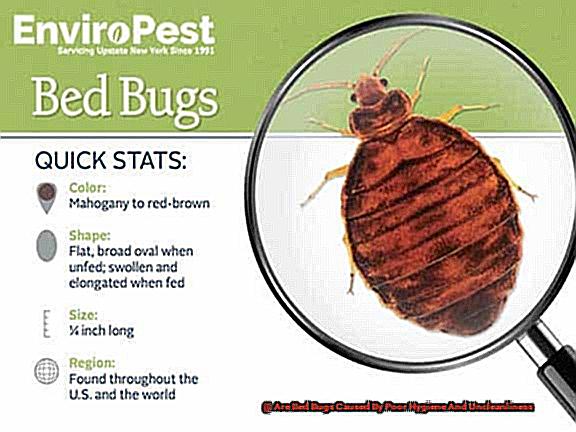
It is worth noting that bed bugs do not transmit any diseases to humans. While their bites may cause mild irritation and itching, they are not harmful. However, their presence can cause significant distress and discomfort, leading many to falsely believe that they are a result of poor hygiene.
Another misconception about bed bugs is that they thrive in dirty environments. While cluttered spaces may offer more hiding spots for these pests, it does not necessarily mean that they will only infest unclean homes. In fact, studies have shown that bed bugs can survive for months without feeding, making them resilient creatures that can easily adapt to any environment.
Moreover, the eradication of bed bugs cannot be achieved solely through cleaning and maintaining good hygiene. While a clean and clutter-free home may help prevent an infestation, it is not a foolproof solution. Bed bugs are known to hide in tiny cracks and crevices, making it challenging to completely eliminate them through cleaning alone.
In conclusion, it is time to dispel the myth that bed bugs only infest dirty homes.
Dispelling the Myth: Bed Bugs in Clean Homes
When the term “bed bugs” is mentioned, what comes to mind? For many, the first thought is a cluttered, unkempt living space. However, the reality is that bed bugs do not discriminate between clean and dirty environments. Their attraction lies in blood, warmth, and carbon dioxide – not dirt or decay.
So why do we associate bed bugs with uncleanliness? Part of the reason is the misconception that these pests only infest filthy homes. But this couldn’t be further from the truth. Bed bugs can easily travel from one place to another via luggage, clothing, and furniture, making any environment susceptible to infestation.
In fact, maintaining a clean home can actually aid in identifying bed bugs early on before they have a chance to spread. By regularly vacuuming and inspecting your mattress and furniture, you may be able to detect bed bugs before they become a larger issue.
But what exactly attracts bed bugs? These minuscule creatures have an exceptional sense of smell and can detect carbon dioxide emitted from humans as they approach their potential host. They are also drawn to warmth and moisture, making our bodies the perfect target for their blood meals.
However, even the most immaculate homes are not immune to bed bug infestations. These pests can easily hide in cracks and crevices, making them difficult to spot and eliminate. To make matters worse, they can survive for months without feeding, meaning even if you don’t use a particular room or piece of furniture often, it could still be housing these pesky insects.
So what can you do to prevent and eradicate bed bugs in your home? Regular cleaning and inspection are crucial. If you suspect a bed bug infestation, it’s imperative to act swiftly and seek professional pest control services. DIY methods may not be effective in completely eliminating these pests.
In conclusion, it’s time to debunk the myth that bed bugs only infest dirty homes. These pests are attracted to blood, warmth, and carbon dioxide, not dirt or decay. Consistent cleaning and inspection can aid in catching bed bugs early on, but seeking professional help is crucial for complete eradication.
Understanding the Behavior of Bed Bugs
Bed bugs, the small hematophagous insects that can infest homes, hotels, and other environments, are a common nuisance faced by many. While it is often believed that bed bugs only infest untidy and cluttered spaces, the truth is that these pests can thrive in a variety of environments. In this section, we will delve into the distinct behaviors of bed bugs that enable them to survive and thrive in different settings.
Hiding in Plain Sight
One of the most remarkable behaviors of bed bugs is their ability to hide in plain sight. These pests are experts at locating small crevices and cracks to conceal themselves, making it challenging for people to detect them. They can be found in mattresses, box springs, furniture, and even behind wallpaper. This behavior allows them to go unnoticed for extended periods, making it easier for them to infest multiple environments.
Nighttime Feeders
Bed bugs are nocturnal creatures and are most active at night when their hosts are asleep. They are drawn to the warmth and carbon dioxide emitted by humans and animals, making beds the ideal feeding ground for them. This behavior also makes it difficult for people to notice bed bugs before an infestation occurs.
Easy Travelers
Another unique behavior of bed bugs is their ability to travel easily. These pests can hitchhike on clothing, luggage, and other items, allowing them to spread rapidly from one place to another. This makes it effortless for them to infest various environments, even those that are well-maintained and clean.
Surviving in Different Environments
Bed bugs have also developed behaviors that enable them to survive in a range of environments. They can withstand extreme temperatures and conditions, making it difficult for individuals to eliminate them through temperature control methods. Additionally, bed bugs can survive for several months without feeding, allowing them to remain hidden until a new host arrives.
Ideal Habitats for Bed Bugs
Bed bugs are attracted to warm environments with easy access to blood meals. This makes places like bedrooms, living rooms, and offices ideal habitats for them. They can also conceal themselves in cracks and crevices in furniture, walls, and flooring, making it challenging for individuals to detect and eradicate them.
In conclusion, bed bugs possess unique behaviors that enable them to survive and thrive in different environments.
How Do Bed Bugs Enter Your Home?
Bed bugs may appear to be harmless and minuscule insects, but they have the potential to become a major nuisance once they invade your home. These elusive creatures are notorious for their ability to hitchhike and easily spread from one location to another, making it crucial to understand their entry points.
There are several factors of poor hygiene and uncleanliness that can contribute to the spread of bed bugs in your home. These include:
- Clutter: A disorganized and cluttered home offers numerous hiding spots for bed bugs to live and reproduce, making it challenging to detect and eliminate them. Piles of clothing, papers, or other items provide an ideal breeding ground for these pests, allowing them to thrive unnoticed.
- Neglecting hygiene practices: Bed bugs are attracted to human blood, and if there are crumbs or spills left behind by humans, it serves as a food source for them. Failing to maintain good hygiene practices such as regular cleaning and vacuuming can attract bed bugs and create an ideal environment for their population to grow.
- Human behavior: Individuals who do not regularly wash their clothes or bedding may unknowingly bring bed bugs into their homes from infested areas. These resilient insects can easily hitchhike on clothing or bags and spread throughout the home. Furthermore, poor personal hygiene habits like body odor and excessive sweating can also attract bed bugs.
- Unclean environments: Bed bugs thrive in warm and humid environments, making dirty and cluttered spaces perfect for them to breed and multiply. Unclean areas also offer hiding spots for bed bugs, making it difficult to detect and eradicate them.
To prevent bed bug infestations, it is essential to maintain good hygiene practices and regularly clean and declutter your home. Regular vacuuming, frequent washing of bedding and clothes, and keeping your living space organized can significantly reduce the risk of bed bugs entering your home.
In addition, it is crucial to exercise caution when traveling or staying in public places such as hotels. Always check for bed bugs before bringing your belongings into a new space and immediately wash and dry all clothes on high heat after returning home.
Remember, prevention is key when it comes to dealing with bed bugs. By maintaining good hygiene practices and keeping your living space clean and clutter-free, you can significantly reduce the risk of these pesky pests entering your home.
Signs of a Bed Bug Infestation
Bed bugs may seem like a mere inconvenience, but they can have a significant impact on your well-being and peace of mind. These minuscule, reddish-brown creatures feed on the blood of humans and animals, and if left unchecked, can quickly multiply and infest your home. But how can you tell if you have a bed bug infestation? In this article, we will explore the most perplexing signs of bed bugs and provide tips for eradicating them.
Puzzling, itchy bites on your skin
The most noticeable indicator of a bed bug infestation is waking up with mysterious, itchy bites on your skin. These bites typically appear in clusters or a zigzag pattern and can appear anywhere on your body. While bed bugs are not known to transmit diseases, their bites can cause discomfort and trigger allergic reactions in some individuals.
Crimson spots on your sheets or mattress
When bed bugs feed, they inject an anticoagulant into their victim’s skin to prevent blood from clotting. As a result, you may notice small crimson spots on your sheets or mattress after being bitten by bed bugs. These spots may also be caused by unintentionally crushing a bed bug while sleeping.
Visible evidence of bed bugs
Bed bugs are small, about the size of an apple seed, and can be challenging to spot with the naked eye. However, with careful inspection, you may be able to see bed bugs or their eggs, exoskeletons, or fecal spots on mattresses, upholstery, or walls. These signs are often found in concealed areas such as cracks and crevices, behind picture frames or headboards, or in furniture seams.
An alluring musty scent
In heavily infested areas, bed bugs release pheromones that emit a sweet musty odor. If you detect this fragrance in your bedroom or other areas of your home, it could be a telltale sign of a bed bug infestation.
What to do if you suspect bed bugs
If you have observed any of these perplexing signs, it is crucial to act promptly and address the issue before it worsens. Here are some steps you can take to eliminate bed bugs:
The Dangers of DIY Bed Bug Removal
As a homeowner, the mere thought of bed bugs invading your humble abode can be a harrowing experience. These minuscule pests have the ability to rapidly multiply and infest every corner of your living space, causing not only discomfort but also potential health hazards. It’s no wonder that many individuals resort to DIY methods in an attempt to rid their homes of these pesky critters.
However, taking matters into your own hands when it comes to bed bug removal can actually do more harm than good. In this section, we’ll delve into the various dangers of DIY bed bug removal and why it’s best to leave this task to the professionals.
Ineffective Treatment
Perhaps the biggest risk associated with attempting DIY bed bug removal is the possibility of ineffective treatment. Bed bugs are notoriously resilient and difficult to eradicate, and DIY methods may not be enough to completely eliminate them from your home. This is because these pests have a knack for hiding in small cracks and crevices, making it challenging for non-professionals to reach and eradicate them all. As a result, you may end up wasting both time and money on treatments that only provide temporary relief.
Health Hazards
Another peril of attempting DIY bed bug removal is the use of harsh chemicals and pesticides. These substances can pose serious health risks to both humans and pets if not used properly. Inexperienced individuals may also fail to follow safety protocols, leading to potential health hazards. Furthermore, improper disposal of infested items can contribute to the spread of bed bugs, putting you and your loved ones at risk.
Recurring Infestations
DIY methods may provide temporary respite from bed bugs, but they often fail to address the root cause of the infestation. Without identifying and targeting the source, you could be faced with recurring infestations in the future. This not only leads to frustration and wasted resources but also increases the likelihood of spreading the infestation to other areas of your home or even neighboring homes.
Lack of Expertise
Removing bed bugs requires a certain level of expertise and knowledge on identifying the type of species present and implementing effective treatment methods. DIY methods may not take into account these crucial factors, resulting in ineffective treatment. Proper identification of the specific bed bug species present is essential in order to use the appropriate treatment methods for successful eradication.
In conclusion, embarking on a DIY bed bug removal journey can pose significant risks and hazards.
Preventing Bed Bug Infestations in Your Home
Are you tired of waking up to itchy, red bites on your skin? Sick of discovering minuscule blood stains on your sheets? It’s time to take action against bed bugs and thwart their attempts to invade your home.
These tiny insects may not be a result of poor hygiene, but maintaining a clean and clutter-free environment is crucial in keeping them at bay. Follow these five simple steps to ensure your home remains bed bug-free.
Maintain a Neat and Tidy Household
Regular vacuuming and dusting are effective ways to eliminate any bed bugs that may be lurking around. Pay special attention to cracks and crevices where they may be hiding. A clutter-free environment also limits their hiding spots, making it easier to spot and eradicate them.
Launder Bedding and Fabrics in High Heat
Bed bugs and their eggs cannot survive in high temperatures, so washing your bedding, curtains, and fabrics in hot water can effectively kill any present bed bugs. Be sure to dry them on high heat as well for added protection.
Thoroughly Inspect Second-Hand Items
Before bringing any second-hand furniture or clothing into your home, carefully examine them for signs of bed bugs. Look for dark spots or stains on fabric, shed skins, or even live bugs themselves. If any signs are found, it’s best to avoid bringing the items into your home.
Seal Up Any Cracks or Crevices
Bed bugs can easily make their way into your home through openings in walls, baseboards, or furniture. Seal up these cracks and crevices to limit their entry points and disrupt their ability to infest your home.
Seek Professional Assistance if Necessary
If you do find yourself dealing with a bed bug infestation, do not attempt to handle it on your own. DIY methods may not be effective and can lead to recurring infestations. Seek professional help from a pest control expert who has the necessary equipment and techniques to eliminate bed bugs.
Bonus Tip: Take Preventative Measures While Traveling
Bed bugs can also hitchhike their way into your home through your travels. When staying in hotels or other accommodations, thoroughly inspect the room for any signs of bed bugs before settling in. Keep your luggage off the floor and wash all your clothes and belongings in hot water upon returning home.
In conclusion, while uncleanliness may not be the cause of bed bugs,
Conclusion
As we conclude our discussion on the question of whether bed bugs are caused by poor hygiene and uncleanliness, it is important to note that the evidence points towards a more complex answer. While it is true that clutter and dirt can provide ideal conditions for bed bugs to thrive, they are not the sole cause of infestations. In fact, bed bugs can be found in clean and well-maintained environments as well.
This highlights the need for proper education and awareness about bed bugs, their behavior, and how to prevent infestations. It also emphasizes the importance of regular inspections and prompt action if an infestation is suspected. Simply attributing bed bug presence to poor hygiene can lead to stigma and discrimination towards those affected.

